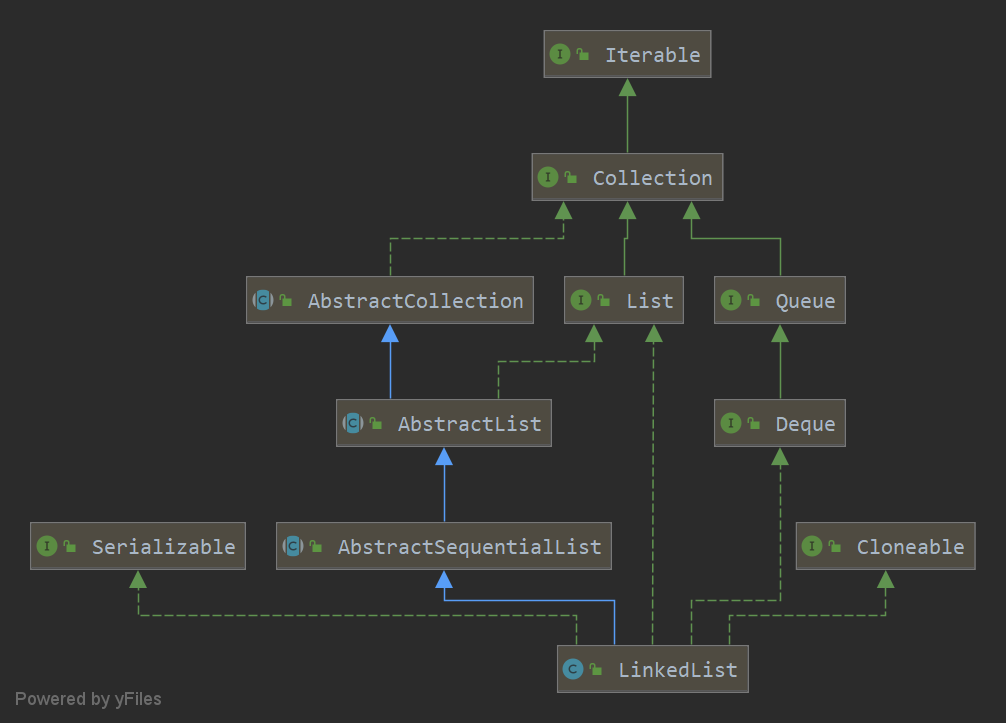2.LinkedList
2.1 UML继承关系图

2.2 底层存储节点
- 通过内部类Node存储,可以看出是双向的链表结构
private static class Node<E> {
E item;
Node<E> next;
Node<E> prev;
Node(Node<E> prev, E element, Node<E> next) {
this.item = element;
this.next = next;
this.prev = prev;
}
}
- add方法是在最后一个node节点增加关联
可以看出LinkedList是开链表,首尾不相连,不会形成闭环
transient Node<E> last;
void linkLast(E e) {
final Node<E> l = last;
final Node<E> newNode = new Node<>(l, e, null);
last = newNode;
if (l == null)
first = newNode;
else
l.next = newNode;
size++;
modCount++;
}
- get,remove方法
对list长度除以2,判断是前部分还是后部分,再进行,循环取值;
Node<E> node(int index) {
// assert isElementIndex(index);
if (index < (size >> 1)) {
Node<E> x = first;
for (int i = 0; i < index; i++)
x = x.next;
return x;
} else {
Node<E> x = last;
for (int i = size - 1; i > index; i--)
x = x.prev;
return x;
}
}
2.3 ListIterator迭代器
- 可以指定开始迭代位置
ListItr(int index) {
// assert isPositionIndex(index);
next = (index == size) ? null : node(index);
nextIndex = index;
}
- remove,set方法前必须要用next()方法,将当前节点缓存到lastReturned
private Node<E> lastReturned;//用于存储切换的node节点
- add 方法根据节点位置,进行判断在节点之前增加,还是节点之后增加
lastReturned = null;
if (next == null)
linkLast(e);
else
linkBefore(e, next);
2.3 常用增删方法实现
- poll,poll,removeFirst 方法,从头部取出数据,并从list中移除该节点
private E unlinkFirst(Node<E> f) {
// assert f == first && f != null;
final E element = f.item;
final Node<E> next = f.next;
f.item = null;
f.next = null; // help GC
first = next;
if (next == null)
last = null;
else
next.prev = null;
size--;
modCount++;
return element;
}
-push 方法是从头部增加节点数据
2.4 LinkedList 内部提供了切分的方法
LLSpliterator<E> implements Spliterator<E>
总结一下:
1.LinkedList的存储时通过Node对象存储的,Node对象有pre,next双向链关联前后Node;FirstNode的pre为空,LastNode的next为空,不能形成闭合的链表;
2.迭代器在移除Node之前,必须使用node方法,缓存当前节点信息否则会报错;
3.LinkedList提供了pop,pull等方法,从头部获取并移除Node